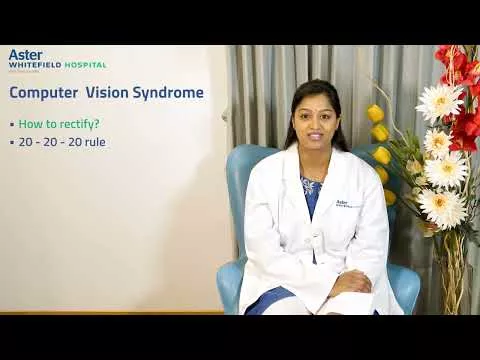Red eyes are a common issue experienced by millions around the world. The condition may sometimes feel like a minor irritation. Other times, it enhances discomfort or even pain. To effectively overcome this issue, individuals must understand the severity of the condition. This blog clarifies the causes of sudden red eyes, explores the symptoms of eye pain and redness, and outlines safe red eye treatment paths.
How Red Eyes Develop
The white of your eye, called the sclera, contains many tiny blood vessels. When those vessels dilate or become inflamed, they stand out more visibly, making the eye look red. There is also thin clear layer covering the sclera known as the conjunctiva which consists of microvasculature which can get inflamed due to certain conditions. That is the basic mechanism.
However, the cause leading to the condition varies significantly. Conventionally, red eyes may result from dryness, irritation, infection, injury, or chronic eye disease. Some causes are mild and resolved on their own. On the flip side, others threaten vision if ignored.
Debunking The Most Common Causes
The following are some of the most common causes that contribute to the issue:
- Conjunctivitis [Pink Eye] - Viral or bacterial infection of the conjunctiva.
- Dry Eye Syndrome - Lack of lubrication causes discomfort and visible redness.
- Corneal Scratch/ulcer [or Foreign Particle] - An injury, infection or dust particle can inflame the eye
- Allergic Reaction - Pollen, dust, or chemicals irritate the ocular surface.
- Subconjunctival Hemorrhage - A tiny, splintered vessel causes a bright red patch.
- Blepharitis - Inflammation of the eyelid edges can lead to redness extending to the eye.
- Uveitis Inflammation inside the eye that can cause pain, sensitivity to light and blurred vision
- Glaucoma - Raised eye pressure leading to congestion
Each of these causes of eye pain and redness has unique features that distinguish it from the rest.
Symptoms That Help Distinguish the Cause
Redness alone is not enough information. You must also note accompanying symptoms. This helps your doctor find the right diagnosis. Look out for:
- A gritty or burning sensation.
- Tearing or thick discharge.
- Photophobia (sensitivity to light).
- Blurred or hazy vision.
- Itching.
- Pain or ache around the eye.
- Swelling of eyelids
If redness comes with intense pain, vision loss, or light halos, it is critical to get medical attention promptly.
When to See an Ophthalmologist
You should seek help when red eyes persist beyond 48-72 hours, or when pain, vision changes, or discharge worsen. Delays may allow an infection or ulcer to deepen. For contact lens users, sudden redness can signal a dangerous complication.
Always remove lenses at the first sign of irritation and visit an eye specialist. An ophthalmologist has the tools to examine internal structures, test intraocular pressure, and check corneal integrity.
Red Eye Treatment: What Works and What Doesn’t
There is no one-size-fits-all remedy to treat red eyes. The treatment depends on the cause confirmed with the skill and proficiency of your eye doctor. Here are commonly used methods:
- Lubricating Drops or gels : For irritation or dryness, artificial tears provide relief.
- Antibiotic drops or Antiviral ointments : Prescribed if infection is involved.
- Antihistamine Eye Drops: For allergies driving redness and itching.
- Steroid Drops: Inflammatory causes like uveitis may require them, under supervision.
- Removal of Foreign Bodies: Doctors may gently extract dust or foreign particle .
- Bandage Contact Lens or Shield: Helps protect the surface while healing.
- Rest and Avoidance of Irritants: Reduce screen time, avoid smoke, and rest the eyes.
All medication must be used under prescription. Self-medication, especially with steroid drops, can worsen problems.
Tips to Prevent Redness in Daily Life
Prevention helps reduce episodes of red eyes. These habits support eye health without needing frequent treatment. Be sure to try the following:
- Taking regular breaks while using screens.
- Keeping your living environment clean and dust-free.
- Wearing protective eyewear in dusty or windy conditions.
- Removing makeup properly before sleep.
- Avoiding rubbing your eyes.
- Staying hydrated and using humidifiers in dry climate.
- Maintaining hygienic practices to prevent transmission of eye infections with close contacts
- Sleeping enough to allow natural eye repair
These small changes reduce strain and exposure, which lowers the chance of flare-ups.
Final Thought: Protecting Vision Is a Priority
Red eyes may be common, but they are not always harmless. The causes of sudden red eyes vary in severity. The presence of pain, vision change, or ongoing redness makes a real difference. Timely red eye treatment is fundamental to preserving eye health and avoiding complications.
If you notice persistent redness or discomfort, schedule an evaluation with a trusted ophthalmologist. A comprehensive eye centre like Aster Hospital, known for its advanced eye care and diagnostic support, can guide you from assessment to treatment. Do not delay when your vision matters most.










